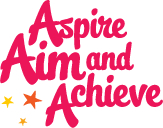Primary
Flags and Symbols
The children will:
- recognise a range of flags and associated teams from countries participating in the Olympic/Paralympic Games;
- recognise and be able to explain a range of symbols associated with the Olympic/Paralympic Games; and
- understand the connection between flags and symbols and identity in people's lives.
Statutory Requirements:
Personal Development and Mutual Understanding
Teachers should enable pupils to develop knowledge, understanding and skills in:
- their self-esteem, self-confidence and how they develop as individuals;
- human rights and social responsibility; and
- valuing and celebrating cultural difference and diversity.
The World Around Us
Teachers should enable pupils to develop knowledge, understanding and skills in our place in the universe.
Cross-Curricular Skills:
Communication
Pupils should be enabled to communicate information, ideas, opinions, feelings and imaginings, using an expanding vocabulary.
Thinking Skills and Personal Capabilities:
Self-Management
Pupils will be aware of personal strengths, limitations and interests.
Thinking, Problem Solving and Decision Making
Pupils will make predictions, examine evidence, and distinguish fact from opinion.
Connected Learning Opportunities:
The Arts Art and Design
Pupils will:
- collect, examine and select resource material to use in the development of ideas; and
- look at and talk about the work of artists, designers and craft workers from their own and other cultures.
Flags and symbols can evoke a range of emotions. How we feel and what we believe about them will depend on:
- how we see the world;
- our personal experiences; and
- how much we have interacted with people from different cultures.
Before doing the activities in this section, the children need to be able to distinguish between fact and opinion. They must also understand that a poor experience with some people from a particular background does not mean that all people from that background will act in the same way.
You can find activities to support this understanding in Living.Learning.Together Year 6, Indigo Unit 6: Check It Out First. You can find activities to help pupils explore identity issues and how our identities are formed in Living. Learning.Together Year 5, Indigo Unit 6: Learning More About Others.
Flags
Use the interactive map on the Olympic.org website to show the children some the many flags of the countries participating in the Olympic Games.
Ask the children to find the flag of one of the 206 countries competing in the Rio2016 Olympic Games and either print it out or draw and colour it themselves.
Create a colourful wall display of all the flags the children have created.
You and your class may like to create a flag to use on your School Sport’s Day.
Discuss the essential elements of a flag to represent the class or the school’s Olympic/Paralympic event. Each group could discuss and design a flag with the final design chosen by the whole class using Dot Voting.
Symbols
Introduce a discussion of symbols by asking why they are used. You may expect answers such as:
- a warning, for example a No Entry sign;
- to identify support for a cause, for example a pink ribbon for breast cancer;
- shorthand for a longer message, for example the entwined initial letters of a primary school;
- on a school badge; or
- a representation of an individual or a group identity, for example Guides/Scouts or GAA club.
Be aware that the children may give other examples representative of their cultural background. Invite each child to bring in something from their heritage that represents an aspect of their identity. Ask each child to explain their symbol to the class; what it represents and why it is used. You can find additional symbols you could include in Primary Values (CCEA), page 199.
Olympic and Paralympic Symbols
Arrange the class into groups and give each group one of the following symbols or logos of the Olympic and Paralympic Games to investigate:
- the Olympic Rings;
- the Paralympic symbol;
- the Olympic and Paralympic Flame;
- Rio 2016 Olympic Torch;
- Rio 2016 Mascots: ; or
- the International Olympic Truce Centre logo.
Ask the children to use the internet to find out what each symbol or mascot represents and how. Ask each group to feedback information about their particular symbol. You can find websites useful for this research in the ‘You will need’ section.
There are fun short cartoon videos of the two Rio2016 mascots which represent the flora and fauna of Brazil on the Rio2016 website which the class might enjoy to round off this activity.
The Olympic Truce
Use the website www.olympictruce.org to explain the truce. Look at the logo for the International Olympic Truce Centre and ask the children why they think that logo was chosen. How did Jesse Owens and Luz Long demonstrate the truce?
You will need
Access to the internet
An interactive whiteboard
Pictures of flags from different countries
Primary Values (CCEA) cultural symbols p199
Living.Learning. Together. Year 6, Indigo Unit 6: Check It Out Firstwww.ccea.org.uk
Living.Learning. Together. Year 5, Indigo Unit 6: Learning More About Otherswww.ccea.org.uk
Olympic Symbols Research websites:
National Olympic Committeeswww.olympic.org
Pictogramswww.rio2016.com
Mascotswww.rio2016.com
Olympic Trucewww.olympictruce.org

